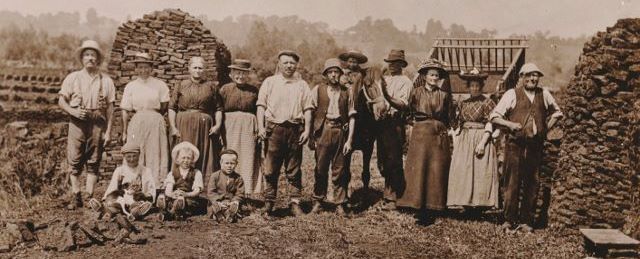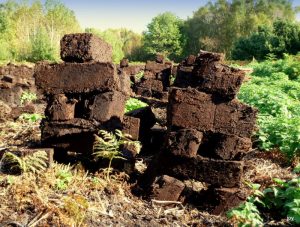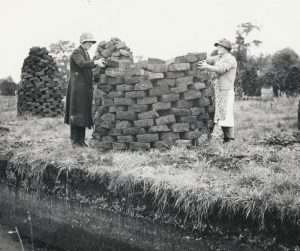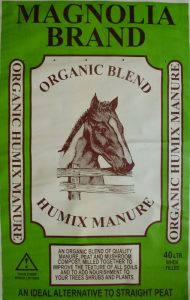Peat Industry
Peat is central to the character and history of Somerset’s Avalon Marshes. It preserved some outstanding archaeology, was a vital fuel for local people, provided rich grazing through dry summers and in the 20th century the peat industry was a big employer of local people. Many of the worked out areas are now nature reserves, but peat extraction still continues today and remains part of the local community and economy, although its detrimental impact on the environment is likely to lead to a ban on the sale of peat-based compost in the coming years.

Turfing family – Alan Difford & Al

Turves – Joy Russell
What is Peat?
Peat is the partially decayed remains of organic matter such as reeds, sedges, mosses and even trees. It forms in wet environments where acidity and low levels of oxygen halts decay.
Peat has formed in the Avalon Marshes over thousands of years starting around 6,000 to 7,000 years ago and continuing to about 400 AD. The lowest layers of peat started as reedswamp, then wet woodland and finally huge raised bogs (you can find out more on our Landscape History page).
The peat diggers had names and different uses for each of these layers, reflecting the plant life from which they were formed:
- Peat topsoil – Not a peat at all but rich organic soil
- Light peat – Mainly formed from sphagnum moss which retains water well (1,600 to 2,000 years old)
- Best black peat – Somerset “sedge peat” which is dark grey-black. It can be dried into hard blocks for burning and is good garden peat. In most areas this is by far the thickest of the layers (2,000 to 4,000 years old)
- Fenwood peat – Contains the remains of willow, birch and alder, which grew in wet woodland (4,000 to 5,500 years old)
- Fen peat – Mainly formed from reeds (5,500 to 6,500 years old)
A Window into the Past
The waterlogged peat of the Avalon Marshes gives us a window into the past. It has preserved a uniquely rich archaeology, in particular the Sweet Track and Glastonbury lake village. It also gives an indication of what the surrounding landscape was like through the pollen record preserved in the peat.
Burning Peat
Wet peat is like a sponge but peats such as sedge peat can be dried into hard blocks, known as “turves”, which can then be burnt as a fuel.
We know that peat has been burnt for thousands of years. The Romans used it to heat “salterns”, pans used to extract salt from sea water by boiling off the water. The communities who lived on the “high” lands of the adjacent hills and islands often had turbary rights to dig peat on what was the common land of the marshes. Each parish would have an area of peat moor for grazing, for thatching reeds and fuel. Local families would cut and dry peat during the summer months ready for cold winter days. Some of this peat might be sold in local towns as an important source of income.

Ruckling – Peter Alexander
Mumps, Turves, Hyles and Ruckles – Turfing
The process of cutting peat had a language of its own. It was a manual process which saw whole families out on the “moors”; father digging the “mumps” and then splitting them into “turves”; wives and children building the “hyles” “tates” and” ruckles”; grandparents helping where they could. It was hard physical work; a wet mump could weigh 12kg (28lb), and ruckles were taller than a man and contained around a thousand turves.
Canals and Railways – Good and Bad
The 19th century saw the construction of the Glastonbury Canal and then the Somerset Central Railway (later the Somerset & Dorset). Improved transport helped peat companies to develop and trade in “burning peat”. However, improved transport also meant cheaper coal which drove the need to develop new uses for peat.
Eclipse Peat Company
One of the companies at the forefront of developing new uses and industrialisation was the Eclipse Peat Company owned by the Alexander family. By the early decades of the 20th century they had built factories, were manufacturing products such as “peat litter” (bedding for animals) and selling “Hummell” for putting greens and race courses.
As business grew so did the demand for labour. Families would still work on the moors digging peat, but men were also needed to work in the factories and to operate the light railways used to haul the dried turves off the moors. The largest of the Eclipse factories was “Great Plains”, which was located in the centre of what is now Shapwick Heath National Nature Reserve.

Peter Alexander / Alvin Neale / AMLP
Cutting Machines and Plastic Bags
By the 1960s a huge change had taken place: little peat was burnt as fuel but vast quantities were sold for horticulture; output was expanded by importing “Steba” peat cutting machines and peat was being sold in plastic bags at the new garden centres; Eclipse was bought out by one of the national “big boys”, Fisons; and annual production was about 65,000 tons. The industry was a now a key part of the local economy, a big employer and was having an increasing impact on the landscape.
Expansion and the End
By the early 1990s , with national marketing and sales, Fisons had purchased more land, brought in new machines and expanded annual production to 250,000 tons. However, national concern was growing about the environmental impact of peat extraction. A huge campaign was started; peat products were boycotted, outlets such as B&Q stopped selling peat, famous names added their weight and there were questions in the House.
The end for Fisons came in 1994 when they pulled out of peat altogether. The result was the end of large scale peat digging in the area with the loss of many jobs. However, it was not the end of the peat industry.
Restoration for Wildlife
Here in the Avalon Marshes most of Fison’s land was handed over to English Nature (now Natural England), this land was scarred and had little wildlife value. English Nature handed on land at Ham Wall to the RSPB to create what was then a new nature reserve. At Westhay Moor the land was transferred to Somerset Wildlife Trust to extend their existing reserve. The remainder was taken on by English Nature. All three conservation organisations, with the support of volunteers and local contractors, started the process of changing the bare industrial landscape into the wonderful sites what we see today.

The Peat Industry Today
Peat digging continues but on a far smaller scale. Local firms, all of whom have operated for decades, provide an important source of local employment. These companies work with the conservation organisations on matters such as water level control and after use. Whilst there is no longer any hand digging on the moors, or rows of ruckles running into the distance, strong bonds with the history of peat remain in the community.
The Peat Industry Tomorrow
The detrimental impact of peat extraction on the environment and climate has been recognised for many years and it is expected that the practice will be banned at some point in the not too distant future. The Government stated in May 2021, supported by the wildlife conservation organisations, that sales of peat compost to gardeners will be banned from 2024, with the intention of eliminating all peat use by amateur gardeners, industrial growers and procurers by 2030 at the latest, by switching to more sustainable, peat-free alternatives.
Credits
With thanks to local volunteer Peter Lander who has researched the history of the peat industry in particular the Eclipse Peat Company. Thanks also to the local people who have shared their memories and photographs with Peter.
Find Out Why Peatlands are Important
Peatlands are capable of absorbing and storing large amounts of carbon dioxide known as “carbon sinks,” making them ideal for helping to tackle climate change.
Powerful Peatlands Climate Change